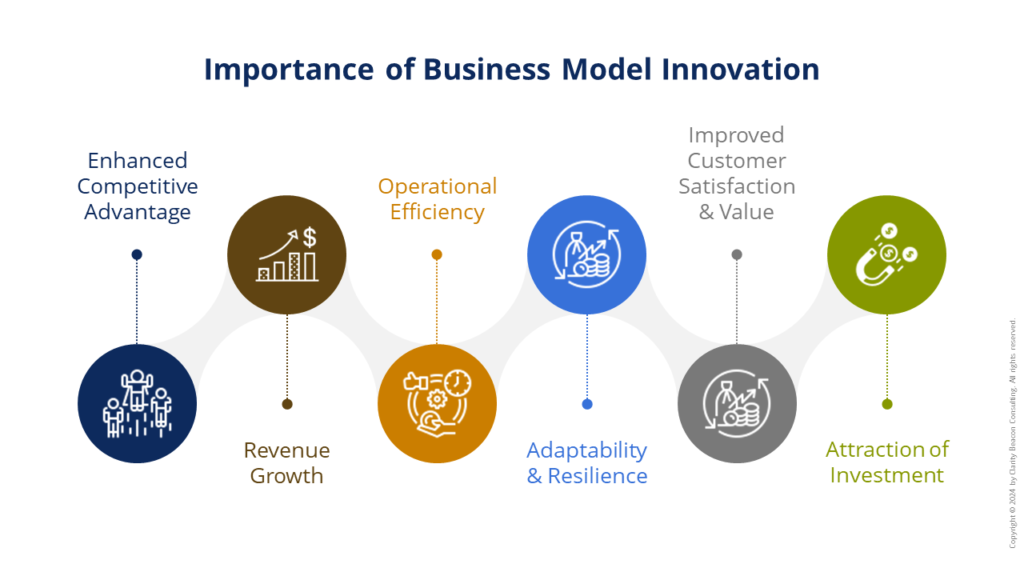The AI market is expanding at an unprecedented pace. Most attention has gone to the infrastructure layer – semiconductors, storage, and foundation models – that power today’s breakthroughs. But the next wave of value will be realized in the application layer, where AI is embedded directly into workflows to solve pressing business challenges.
At Clarity Beacon Consulting, we see enterprise AI value clustering around three primary drivers:
- Operational efficiency – automating processes, reducing costs, and unlocking productivity
- New products & services – enabling offerings that weren’t possible before
- Customer experience – delivering faster, more personalized and more reliable interactions
Where the Biggest Opportunities Are
The greatest upside remains in industries lagging in productivity – manufacturing, logistics, construction, and healthcare. These sectors face real headwinds: labor shortages, safety risks, and operational inefficiencies. AI adoption has been slow here, but the opportunity is immense: even modest productivity gains can shift entire industries.
Beyond Software: The Rise of Physical AI
To capture this potential, software-only solutions won’t be enough. We are entering the era of Physical AI – where intelligent systems connect digital and physical worlds, taking real-world actions rather than producing only digital outputs.
This won’t start with humanoids walking the streets. Physical AI will start with focused, high-impact applications:
- Safety & risk mitigation, e.g., robots navigating hazardous construction or mining sites
- Workflow automation, e.g., intelligent systems automating routine healthcare or logistics tasks
- Adaptive operations, e.g., edge AI embedded in machinery that adapts in real time
- Mobility, e.g., autonomous vehicles in logistics and fleet operations
Augmenting Human Work
This is not about job loss – it’s about augmenting work. Physical AI is stepping in to handle tasks that are:
- Dangerous – improving worker safety.
- Example: Field AI is developing universal robot control systems designed for unpredictable environments, where human error or AI “hallucination” could be fatal. Bedrock Robotics is developing autonomous construction technologies designed to handle hazardous, labor-intensive tasks on job sites
- Repetitive – freeing employees for higher-value tasks.
- Example: Dexterity equips warehouse robots with human-like dexterity to manage repetitive picking, packing, and sorting in logistics operations, letting human workers focus on oversight and exception handling
- Time-consuming – accelerating productivity where margins are tight.
- Example: Diligent Robotics supports hospital staff by autonomously fetching supplies and managing routine errands, giving nurses and clinicians more time for patient care
What It Will Take
Realizing this future demands more than better algorithms:
- Clear strategy to pinpoint where AI moves the needle
- Purpose-built hardware for intelligent automation
- Refined, domain-specific models for complex, real-world contexts
- Bold leaders willing to drive transformation and execution
Why Us?
At Clarity Beacon Consulting, we help business leaders solve tough challenges and capture big opportunities at the intersection of strategy, technology, and transformation. If your organization is exploring how AI – whether digital or physical – can (re)shape your operations, customer experience, or product portfolio, we’d be glad to partner with you in charting the path forward.
The next era of AI won’t just think. It will act. Leaders who embrace AI today will be building enterprises ready for the future!
